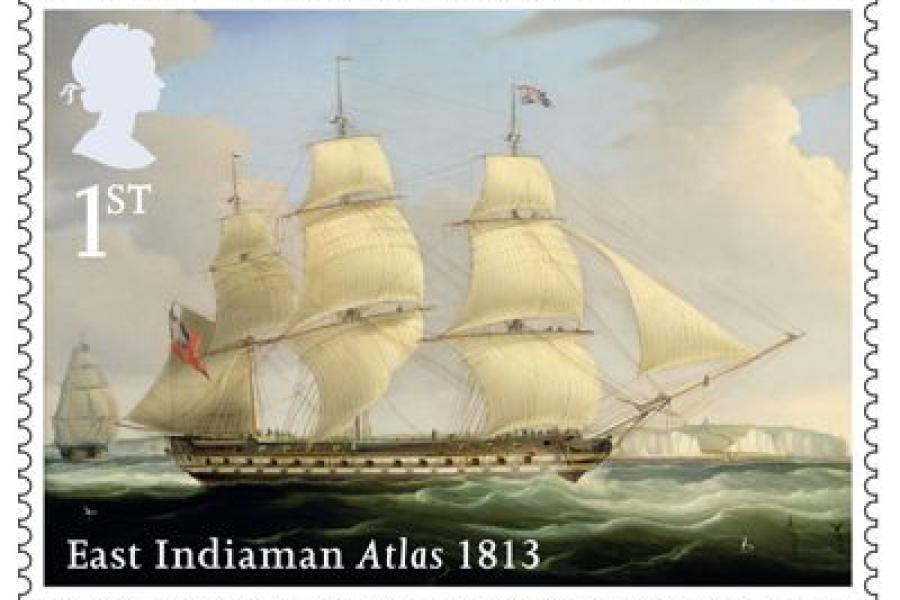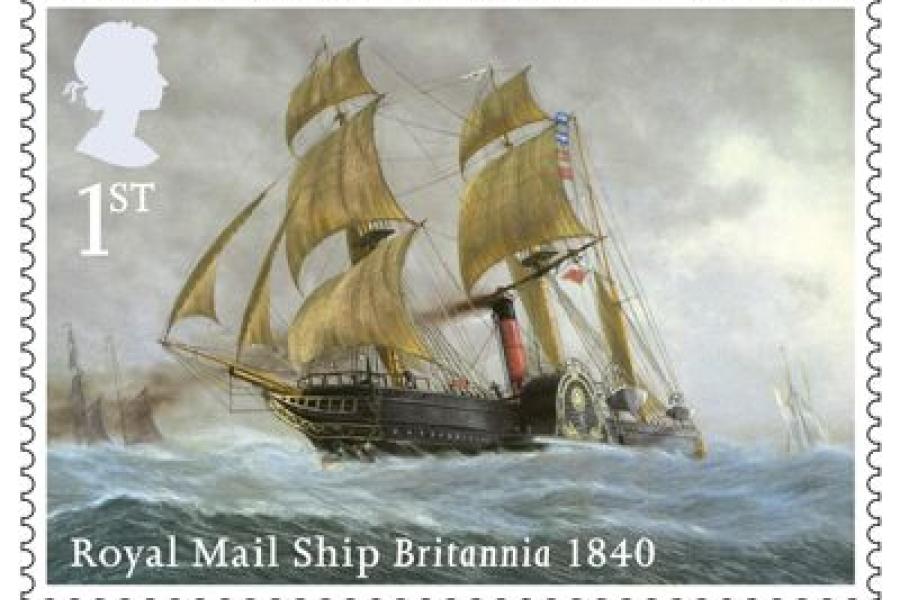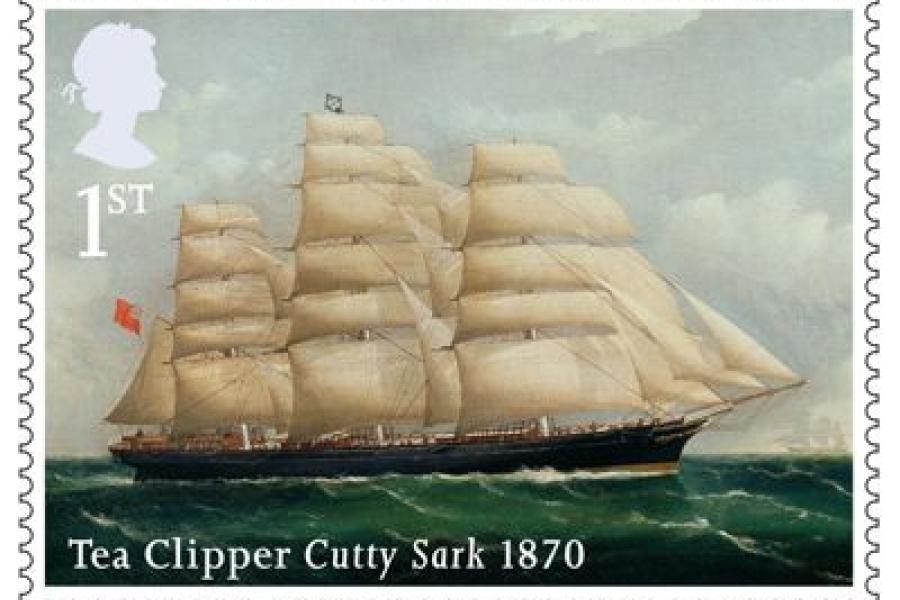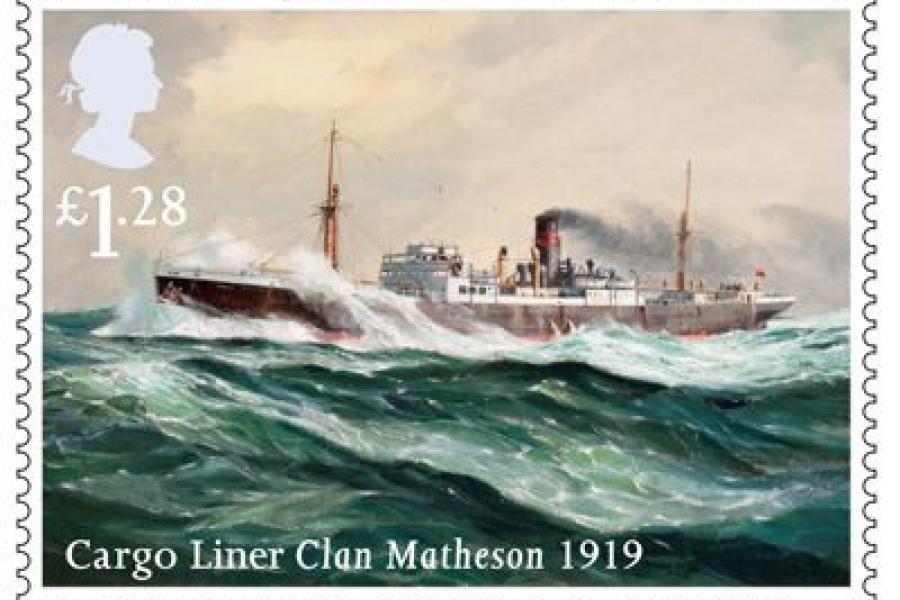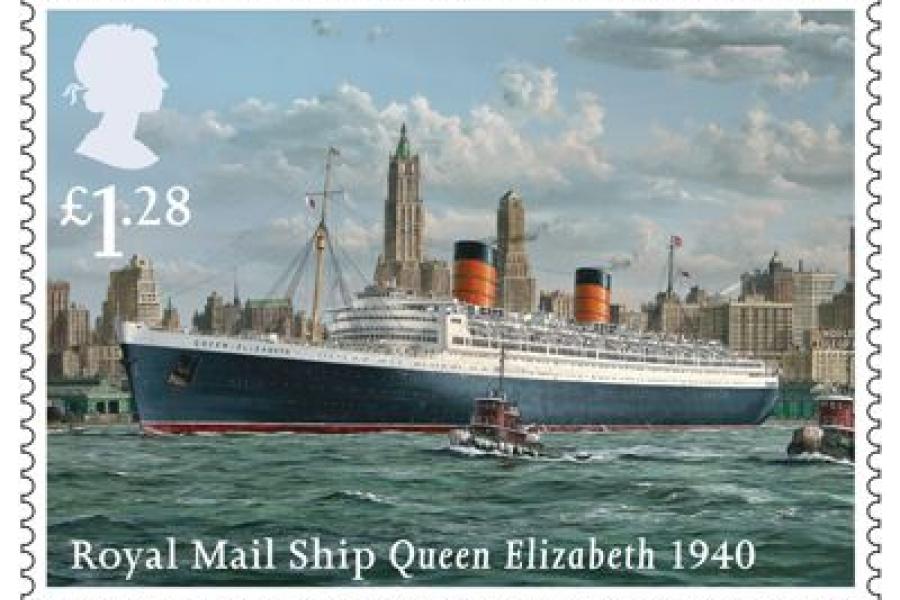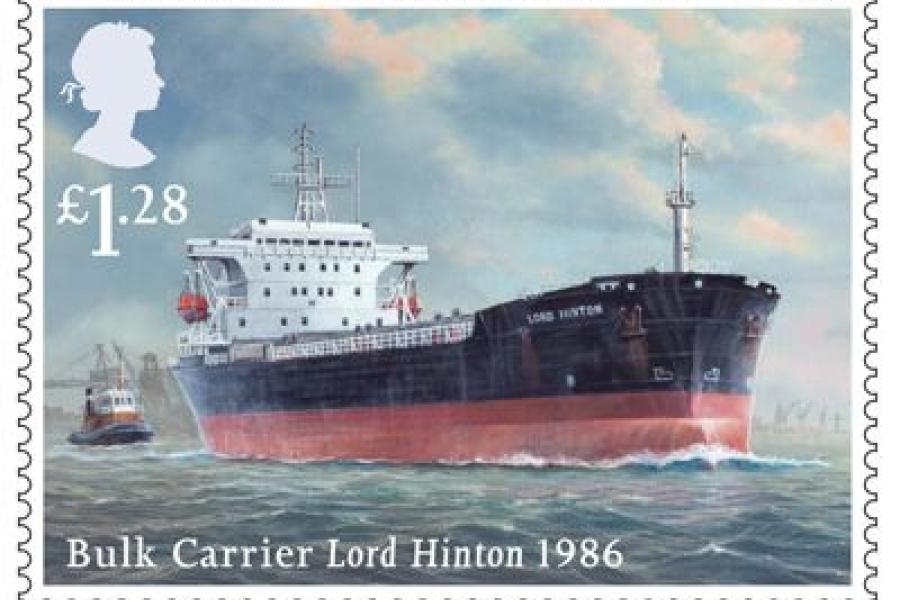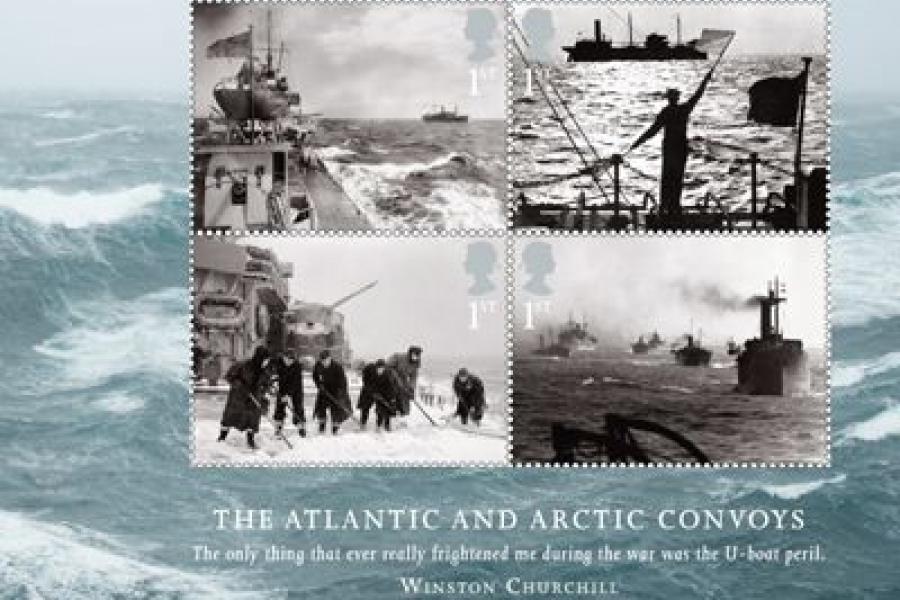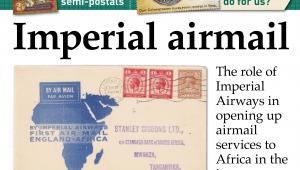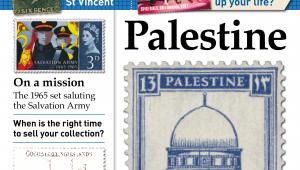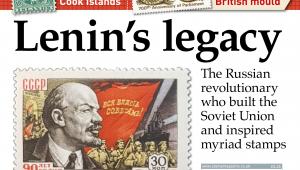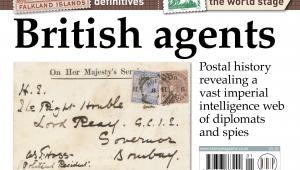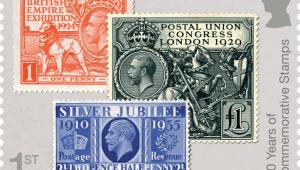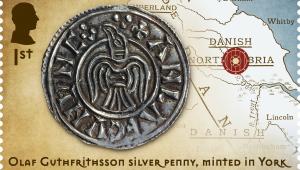Super ships and heroes of the Merchant Navy

Royal Mail will issue a set of six stamps saluting the Merchant Navy on September 19, with an accompanying four-stamp miniature sheet honouring the achievements and the sacrifice of those who took part in the perilous Atlantic and Arctic convoys in World War II.
The history of Britain’s merchant fleet is intertwined with the fortunes of the nation. The Empire was built on the carriage of goods, by private organisations such as the East India Company, and emigrants and mail, not least by Royal Mail ships.
By 1914 half the world’s trade was carried in British ships, and the contribution of these to victory in World War I was so great that King George V approved their being known collectively as the Merchant Navy.
Between 1939-45, the maintenance of ‘guns and butter’ supplies in support of the war effort again proved crucial, and the 70th anniversary of the turning point in the Battle of the Atlantic is being widely celebrated this year.
Both elements of the issue were designed by Silk Pearce, the sheet stamps from contemporary paintings by various artists and the miniature sheet from wartime photographs. The sheet stamps were printed in lithography by Cartor, and the miniature sheet in lithography by Enschedé.
VERDICT
COMMEMORATIVE WORTH
The Merchant Navy was key to the growth of the British Empire, and the convoys crucial to winning the war
QUALITY OF DESIGN 
The sheet stamps are beautiful, although the miniature sheet fails to convey drama and heroism
WOW FACTOR 
It would be lovely to see RMS Britannia adorning commercial mail, but don’t hold your breath…
1st class East Indiaman Atlas, 1813
Built on the Humber by Thomas Steemson, the 134ft Atlas was a three-masted sailing ship with a single gun deck for defence against corsairs and pirates. Chartered by the East India Company, she voyaged to India, Penang and China, with outward cargoes that included mail and gold bullion, and homeward cargoes of tea, porcelain, silk and saltpetre. She was decommissioned and broken up in 1830.
1st class Royal Mail Ship Britannia, 1840
When Samuel Cunard and his partners won the contract to carry transatlantic mail, they ordered four paddlesteamers from Clydeside shipyards, the first of which was the 207ft Britannia. Fitted with sails but normally powered by a 450hp Napier steam engine, her first crossing from Liverpool to Nova Scotia took 12 days. Although the very first RMS was soon superseded by propeller-driven steamers, she helped to establish the Cunard brand, which became a magnet for glamorous passengers.
1st class Tea Clipper Cutty Sark, 1870
Named after the chemise worn by the witch Nannie in Robert Burns’ poem Tam O’Shanter, the Cutty Sark was built by Scott & Linton on the Clyde for the China tea trade. A full-rigged sailing ship of wooden and iron construction, she was designed to be fast enough to catch the start of the seasonal tea market in London, and was capable of 17 knots. She was later diverted to the Australian wool trade, and since 1954 has been a visitor attraction in Greenwich.
£1.28 Cargo Liner Clan Matheson, 1919
Built by William Hamilton on the Clyde and powered by a triple-expansion steam engine, the 397ft Clan Matheson was one of the Clan Line of cargo ships which ran scheduled services from Britain to South Africa, East Africa and India, specialising in heavy cargo such as locomotives for the Indian railways. Requisitioned in World War II, she recovered from being set on fire by Japanese bombers in Calcutta in 1943 but was scuttled in the North Atlantic in 1955.
£1.28 Royal Mail Ship Queen Elizabeth, 1940
Built by John Brown on the Clyde and launched by the consort of King George VI, after whom she was named, the 1031ft ocean liner Queen Elizabeth was the largest ship in the world, with steam turbines generating 200,000hp to drive her four propellers. Requisitioned as a troop-carrier in World War II, she did not go into regular service until 1946, taking 2,200 passengers to and from New York. Retired in 1968, she caught fire and capsized while being converted into a floating university in Hong Kong in 1972.
£1.28 Bulk Carrier Lord Hinton, 1986
Constructed by Govan Shipbuilders on the Clyde, the 511ft Lord Hinton, named after the nuclear engineer who became the first chairman of the Central Electricity Generating Board, served until 2004 as a collier, carrying coal from the Tyne-Tees terminal to Kingsnorth power station on the Medway. She later carried her cargo from coal exchanges in Europe on behalf of E.On Energy, before being sold overseas in 2012 and renamed Umay.
MINIATURE SHEET
To protect merchant ships from German attack during World War II, a convoy system was established, whereby flotillas would sail together under escort by warships of the Royal Navy, the Royal Canadian Navy or the US Navy.
Following the German invasion of the Soviet Union in 1941, British convoys also began to supply the Arctic ports of northern Russia.
Hundreds of ships and thousands of men were lost, primarily to torpedoes fired by German U-boats, but by the summer of 1943, improved sonar, radar and anti-submarine tactics began to enable the convoys to win the Battle of the Atlantic.
1st class
The British destroyer HMS Vanoc on escort duty as part of an Atlantic convoy.
1st class
A merchant ship passing the wartime Naval Control Base in the Thames Estuary.
1st class
A wartime convoy of 24 merchant ships under steam in the North Sea.
1st class
Sailors clearing the decks of the British battleship HMS King George V in Arctic waters.
OTHER PRODUCTS
A prestige stamp book written by Captain Richard Woodman, a naval historian, tells the story of the merchant navy. A first day cover and stamp cards are also available.
PRICES
Set of 6 stamps £5.64
Miniature sheet £2.40
Presentation pack £8.55
Stamp cards £4.95
First day cover (sheet stamps) £7.24
First day cover (miniature sheet) £3.36
First day envelope £0.30
Prestige stamp book £11.19
TOTAL £43.63
